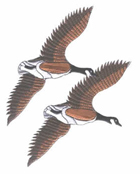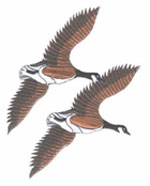Hired Guns in Havana
On January 1, 1959, the Cuban dictator Fulgencio Batista was overthrown by rebel forces, only to be replaced with another dictator - Fidel Castro. Like many conflicts that have taken place since WW2, foreign mercenaries played a role, in this case fighting alongside Cuban nationals during the revolution that would install Castro.
Typically, little is known about most of these foreign volunteers; however the stories of some of these men provide an interesting insight into the typically shadowy and ruthless world that soldiers of fortune operate within.
Larger than life revolutionary figure Che Guevara could arguably be considered a mercenary (though his many fans might be offended by such a title). As an Argentine national, he fought in foreign countries, such as Cuba and the Congo, where Argentina was not militarily involved.
Prior to this he had been a member of a Communist youth militia in Guatemala. Later, in Mexico, he joined the 26th of July Movement, and undertook guerrilla warfare training that he would later put to good use in Cuba
Undoubtedly, Guevara was the best known foreign national who participated in the armed struggle. He would later end his days in Bolivia, after being captured on yet another foreign battlefield. Che’s fate could be compared to some of the American citizens who journeyed to Cuba to participate in a conflict ion which their home country had no overt interest.
William Morgan and Herman Marks are just two of several American nationals who found themselves fighting alongside Guevara and Castro during the Cuban Revolution. While it’s unknown if the two men ever met on the battlefield or in the jungle, their paths would cross, briefly and bloodily, once the revolution was over.
William Morgan of Toledo, Ohio, was 28 years old when he joined the rebel fighters shortly before Christmas 1957. Enlisting as a soldier, Morgan would soon be conferred the rank of commander (major) by Castro himself.
As a troubled youth Morgan was lucky to avoid the consequences of armed robbery charges due to his juvenile status. Morgan had then served in the US Merchant Marine and later in the army. His military service was less than distinguished, ending in a prison sentence and dishonourable discharge. After escaping from prison, Morgan also served additional time in a federal penitentiary in Michigan.
It’s believed that he initially made contact with Cuban dissidents in Florida. He would later give his reasons for joining the rebels as a desire for revenge against the Batista regime, which had captured and killed a friend of his, Jack Turner.
During the revolution, Morgan would lead a rebel group known as the Tigers of the Espesura. Morgan claimed that his force fought in more battles, and suffered heavier losses than any of the other rebel units. He would also claim to have never been paid as a soldier of fortune, insisting that his motives were loftier.
While the validity of these claims is a matter of some conjecture, what is known is that Morgan had abandoned a wife and two young children to enlist, and later took a Cuban wife, who would also bear him two children.
In a 1959 interview Morgan stated that, “We have no Communists here in Cuba. We don’t want any and we’re not going to have any.” These views would come back to haunt him later on. As Castro’s new regime took on a decidedly Marxist bent, opponents of Communism would fall out of favour, regardless of their previous contributions to the revolution.
By 1960 William Morgan, former leader of the Tigers of the Espesura and revolution hero would find himself breeding wildlife at a collective farm. He was one of an estimated two dozen Americans who had found their reward for liberating Cuba to be less than they might have dreamed of.
At this time Morgan was still armed and wearing his major’s uniform, while extolling the virtues of Cuban frogs’ legs to reporter Robert Branson. Marginalised in his new homeland, he was earning less than a quarter of his former wage in the US, and was apparently receiving death threats from near and far.
At the same time another American expatriate, Herman Marks, was working as security director at a notorious prison in Havana.
In 1960 Marks was in his late thirties. He had also joined Castro’s forces in 1957, and had been promoted to the rank of captain. His previous repertoire was even darker than Morgan’s. Herman Marks had been arrested no less than 32 times in the United States, for charges including vagrancy, assault, theft and rape, and like Morgan had also served time in several prisons. Little is known of Marks’ military experience, as sources refer to him alternately as a draft-dodger and Marine deserter. What’s obvious is that he certainly had no illustrious military career prior to joining the rebels.
Cuban sources describe Marks as a fierce fighter, who took part in key battles at Santo Domingo, Casa de Piedra and Meriño. He was apparently wounded in the foot during a fire fight in Camagüey province.
He would later come to prominence as Castro’s chief executioner, a grisly task for which he is reported to have shown great zeal. Marks always applied the coup de grâce himself. Lurid tales of his excesses abound, including his penchant for allowing his beloved pet dog to lap up the spilled blood of the executed prisoners.
William Morgan was arrested in November 1960. He had become involved in CIA plotting to remove the communist regime from power, and was charged with assisting anti-Castro forces hiding in the Escambray Mountains.
Morgan conducted himself with dignity while being held in La Cabaña prison. The guilty verdict at his “trial” in March of the following year was naturally a foregone conclusion, as was the death sentence that came with it. Morgan would have been acutely aware that this would be his fate when he was first arrested.
Maintaining the dignity which he’d become known for whilst a prisoner, William Morgan sang the ‘Caisson Song’ as he was led to the place of execution in the dead of night.
There are several stories about the exact circumstances of the mercenary’s death. The most popular goes that an unidentified voice, probably Castro’s, called from the darkness for Morgan to kneel. The American refused, proclaiming that he knelt for no man. He was then shot in each knee, and thus forced to kneel.
“There! You see, we made you kneel!” the same voice shouted. A quick series of commands in Spanish was issued, a volley of shots rang out, and William Morgan slumped to the ground. His fellow countryman, Herman Marks, then stepped forward and finished him off.
Regardless of the exact circumstances, the great adventure was over for William Alexander Morgan. He was buried in an unmarked grave in Havana’s Colon cemetery.
As for Marks, he would eventually come to be reviled even by his masters. Unlike Morgan, he could sense that he was in danger, and fled Cuba, returning to the United States. Some efforts were made by US authorities to deport him back to Cuba (and certain death), but these came to nothing, and Herman Marks continued to live out his life in peace and obscurity in the country of his birth.
© Copyright John Obrien 2010
Sources
Anderson, Jon Lee. Che Guevara: A Revolutionary Life. Grove Press. 1997
Bethel, Paul. The Losers. Arlington House. 1969.
Branson, Robert. Reward Of Castro Hero. The Toledo Blade. April 11, 1960.
Cort Kirkwood, R. Cuban Exile Humberto Fontova exposes the Real Che Guevara. The New American. November 12, 2007.
Escalante, Fabian. The Secret War: CIA covert operations against Cuba 1959-62. Ocean Press. 1995.
Fontova, Humberto. Murder Boys - Not Flies! Says PETA. www.humanevents.com . June 23, 2009
Kellner, Douglas. Ernesto “Che” Guevara (World Leaders Past & Present). Chelsea House Publishers. 1989.
Pegler, Westbook. The Case of Cuba’s Maj. Alex Morgan. The Miami Herald. May 23, 1959.
Smith, Jorge. Americans in Fidel Castro’s Troops. www.cubanow.net
Vargas Llosa, Alvaro. The Killing Machine: Che Guevara, from Communist Firebrand to Capitalist Brand. The New Republic. July 11, 2005.
Castro Names Toledoan to Military Post. The Toledo Blade. January 5, 1959.
Leader of Castro’s Jungle Fighters Wants to Return Home to Toledo. The Toledo Blade. January 6, 1959.
Adventurer Divorced By Toledo Wife. The Toledo Blade. January 7, 1959.
Cuba: Chief Executioner. Time. April 13, 1959
Cuba: Year of the Firing Squad. Time. Feb 2, 1961.
La Revolucion’s William Morgan, Eloy Gutierrez Menoyo and the Second Front. www.havanajournal.com . March 28, 2006.
www.therealcuba.com



